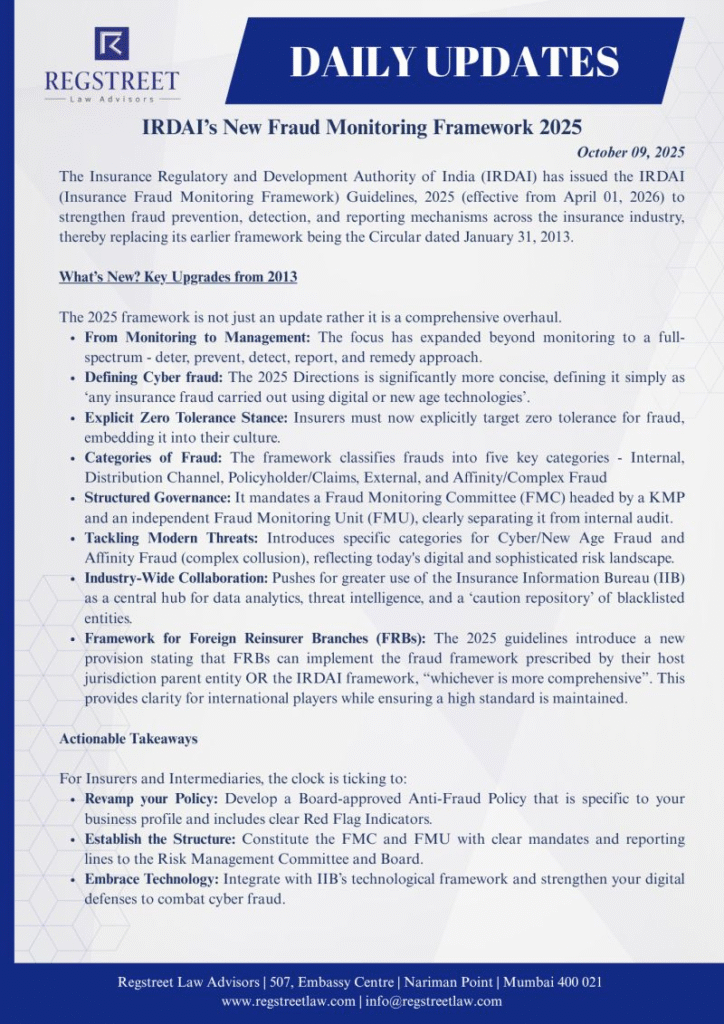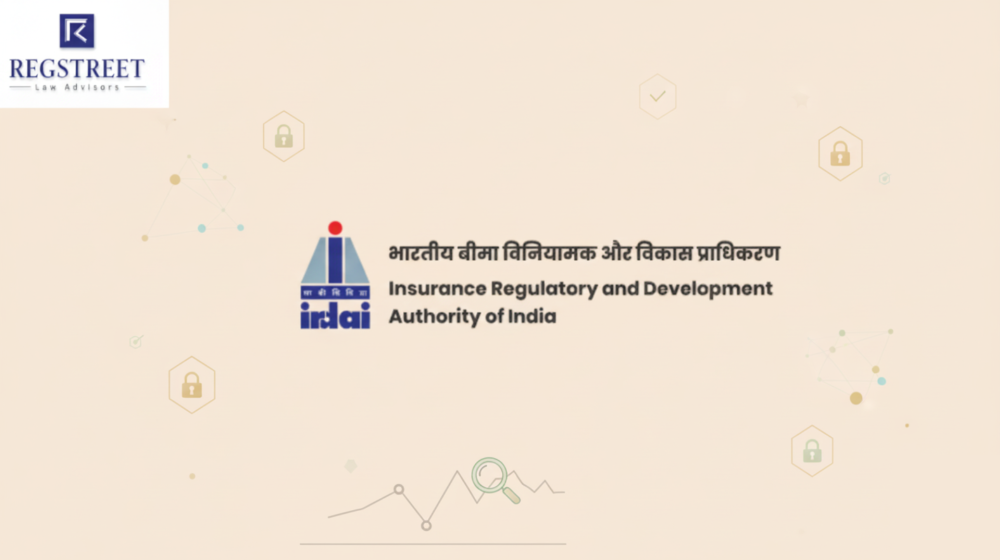The Insurance Regulatory and Development Authority of India (IRDAI) has issued the IRDAI (Insurance Fraud Monitoring Framework) Guidelines, 2025 (effective from April 01, 2026) to strengthen fraud prevention, detection, and reporting mechanisms across the insurance industry, thereby replacing its earlier framework being the Circular dated January 31, 2013.
What’s New? Key Upgrades from 2013
The 2025 framework is not just an update rather it is a comprehensive overhaul.
• From Monitoring to Management: The focus has expanded beyond monitoring to a full-spectrum – deter, prevent, detect, report, and remedy approach.
• Defining Cyber fraud: The 2025 Directions is significantly more concise, defining it simply as ‘any insurance fraud carried out using digital or new age technologies’.
• Explicit Zero Tolerance Stance: Insurers must now explicitly target zero tolerance for fraud, embedding it into their culture.
• Categories of Fraud: The framework classifies frauds into five key categories – Internal, Distribution Channel, Policyholder/Claims, External, and Affinity/Complex Fraud
• Structured Governance: It mandates a Fraud Monitoring Committee (FMC) headed by a KMP and an independent Fraud Monitoring Unit (FMU), clearly separating it from internal audit.
• Tackling Modern Threats: Introduces specific categories for Cyber/New Age Fraud and Affinity Fraud (complex collusion), reflecting today’s digital and sophisticated risk landscape.
• Industry-Wide Collaboration: Pushes for greater use of the Insurance Information Bureau (IIB) as a central hub for data analytics, threat intelligence, and a ‘caution repository’ of blacklisted entities.
• Framework for Foreign Reinsurer Branches (FRBs): The 2025 guidelines introduce a new provision stating that FRBs can implement the fraud framework prescribed by their host jurisdiction parent entity OR the IRDAI framework, “whichever is more comprehensive”. This provides clarity for international players while ensuring a high standard is maintained.
Actionable Takeaways
For Insurers and Intermediaries, the clock is ticking to:
• Revamp your Policy: Develop a Board-approved Anti-Fraud Policy that is specific to your business profile and includes clear Red Flag Indicators.
• Establish the Structure: Constitute the FMC and FMU with clear mandates and reporting lines to the Risk Management Committee and Board.
• Embrace Technology: Integrate with IIB’s technological framework and strengthen your digital defenses to combat cyber fraud.
The IRDAI Guidelines are available at https://lnkd.in/gYtgC2xV
Readers are welcome to share their views with Regstreet Law Advisors at info@regstreetlaw.com


